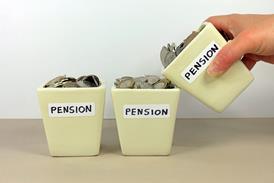A funding crisis in the pension scheme for teachers could lead to further contribution increases and yet more private schools leaving the scheme, as Covid-19 and the McCloud judgment take their toll.
Between August 31 2019 and July 1 2020, 110 independent schools left the Teachers’ Pension Scheme, and a further 56 have indicated their intention to leave at a later date, according to a freedom of information request submitted by Pensions Expert to the Department for Education. This represents a fifth of the 1,170 private schools in the TPS at the start of 2019.
The retreat has been triggered by a rise in employer contributions in September 2019, to 23.6 per cent of salary from 16.48 per cent. For many schools, this 43 per cent increase is unaffordable.
But experts say this conservative analysis could be eclipsed in future, as worsening economic conditions leave further contribution rises on the cards.
“If anything, this understates the numbers looking to opt out, as notifying the DfE would normally come after consultation and this has, in several instances, been delayed due to wider challenges,” said Martin Willis, principal at Barnett Waddingham.
In most cases, this means a DC scheme should have an employer contribution rate of at least 16 per cent, equal to the amount schools had to pay into TPS prior to the September 2019 contribution increase
Alistair Russell-Smith, Hymans Robertson
“Schools that could have afforded the increased level of contributions before March may now have to revisit in a changed world,” added David Woodgate, chief executive of the Independent Schools’ Bursars Association. He pointed out that the “government has made it clear that a response on the mixed economy/phased withdrawal is not anticipated any time soon, which may focus a small number of schools on the need to consider other options”.
Mr Woodgate said: “Some firms of actuaries are suggesting that, with the McCloud costs of compensation and the impact on the quadrennial revaluation of economic factors post-Covid-19 and post-Brexit, employer contributions could exceed 30 per cent from 2023.”
He added that there are “many caveats around that... but it will be a factor boards of governors will be considering.”
Exit costs are another issue, according to Mr Willis: “Although TPS is an unfunded scheme with no deficit or exit costs, there is no guarantee that will remain the case forever. It is hard to predict with any accuracy if, when and how an exit charge would be introduced, but as long as it is a possibility it presents a risk.”
Tough choices for schools
Embarking on a change to the TPS is likely to be one of the most talked about and emotional changes the school can make.
Stuart Arnold, associate director at Punter Southall Aspire, said: “It is vitally important that schools go into the change with a clear understanding of the legal process.”
Mr Arnold said he has seen “a wide range of requirements within teachers’ contracts of employment, highlighting how vital it is to get specific legal advice for your school”.
Alistair Russell-Smith, head of corporate defined benefit at Hymans Robertson, emphasised the need to remain competitive.
“In most cases, this means a defined contribution scheme should have an employer contribution rate of at least 16 per cent, equal to the amount schools had to pay into TPS prior to the September 2019 contribution increase,” he said.
Mr Russell-Smith added that DC arrangements can allow more flexibility to members, who may even opt to take lower contributions in exchange for more salary.
“Some schools are offering their teachers a ‘total reward’ solution, where teachers can choose to stay in TPS on a lower salary or opt out into a DC scheme on their existing salary. This can be attractive in terms of giving teachers choice, but may cause further employee relations issues if the teachers in TPS have to take a further pay cut when TPS costs increase again in 2023,” he said.
“Schools that have left TPS have not encountered any new issues with attracting and retaining staff,” he noted, adding: “This is unsurprising, because more than half of independent schools have never participated in TPS.”
Aviva cashes in
One insurer is mopping up the market for TPS dropouts with its master trust. Mr Arnold said: “The Aviva Pension Trust for Independent Schools has proven very popular with many schools, particularly as it is supported by ISBA.”
However, he said that organisations, particularly medium and larger schools, may get better terms by shopping around.
USS member satisfaction at ‘record low’ as contributions rise
Members of the Universities Superannuation Scheme are growing increasingly dissatisfied with their relationship with the scheme, its latest annual report and accounts show.
Mr Russell-Smith echoed this: “The APTIS scheme is proving popular, particularly for smaller schools. However, often for larger schools, particularly when support staff are added into the equation to give a bigger population, the best terms can be achieved by fully testing the market.”
Mr Willis cautioned schools considering a change “not to forget about non-pension benefits — TPS offers death-in-service and ill-health retirement benefits, and if and how these are replicated should be considered”.






















